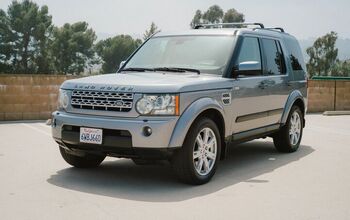Which Nation Tops the List for Vehicle Ownership Per Capita? The Answer Might Surprise You
In 2020, the United States reported a total of 289 million vehicles in operation, making up approximately 18 percent of the global count. This marked a significant increase, more than doubling the number since the 1960s. When exploring car ownership rates on a global scale, it's crucial to understand the variances in ownership, growth trends, and the rising influence of the global middle class on these dynamics.
Worldwide Rankings in Vehicle Ownership
The United States follows with a considerable 860 vehicles per 1,000 people, reflecting a robust vehicle market. Similarly for North America, Canada follows the States with 707 vehicles per 1,000 people. Europe presents a mixed scenario, with Poland and Italy notable for their high vehicle per capita rates. Poland, with 761 vehicles per 1,000 inhabitants, shows substantial vehicle ownership yet has a minimal adoption of electric vehicles. Italy stands with 756 vehicles per 1,000 people just slightly less than Poland. In stark contrast, Norway, with 635 vehicles per 1,000 people, has embraced electric vehicles more extensively, with a significant proportion of its vehicle market being electric.
In the top spot however is New Zealand with 869 vehicle per 1,000 people where the majority of their cars are imported from Japan.
The Surge in Global Vehicle Ownership
The expansion of the global middle class has propelled rapid growth in vehicle ownership in several countries. Vietnam, for instance, has experienced a dramatic increase in motorization, with an annual growth rate of 17 percent between 2015 and 2020. China and India also saw significant rises, highlighting a global trend towards increased vehicle ownership.
Electric Vehicles: The Future of Mobility
Electric vehicles (EVs) are gaining traction worldwide, with China leading the charge. The country houses more than half of the global EV fleet, a testament to its strategic position near essential raw materials for EV batteries and its robust battery production capabilities. Government policies have played a pivotal role in this sector, with China and Norway implementing strategies to overcome operational challenges and promote EV adoption. Norway, in particular, is on a path to eliminate sales of internal combustion engine vehicles by 2025, showcasing the country's commitment to sustainable mobility.
Concluding Thoughts
As vehicle ownership continues to evolve, the global landscape reveals a complex interplay between traditional vehicles and the emerging EV market. Countries like New Zealand and the U.S. demonstrate high vehicle per capita rates, while nations such as Vietnam and China show rapid growth, driven by economic expansion and policy initiatives. The shift towards electric vehicles, led by China and Norway, underscores a global trend towards more sustainable forms of transportation.
This article was co-written using AI and was then heavily edited and optimized by our editorial team.
More by TTAC Staff
Latest Car Reviews
Read moreLatest Product Reviews
Read moreRecent Comments
- Mikey My youngest girl ( now 48 ) dated a guy that had a Beretta with a stick shift. The Dude liked Beer and weed. too much for my liking..I borrowed my buddy's stick shift Chevette and give her short course on driving a manual .. I told her if the new BF has more than 2 beer or any weed ..You drive ...I don't care how many times you stall it, or or of you smoke the clutch . She caught on quite well ,and owned a succession of stick shift vehicles...An as an added bonus she dumped the guy.
- Blueice "Due to regulation/govt backing, China is poised to dominate BEV/battery production, just as they do solar panel production, drone production, etc.Taiwan dominates production of certain types of chips due to regulation/govt backing and we saw how precarious such a situation is (especially with the PRC increasingly becoming aggressive towards Taiwan).That's why regulation/govt backing is aiming to build up local chip manufacturing."BD2, these businesses and or industries are not free market enterprises, buttcorporatist, bent on destroying their competitors with the use of governmentalunits to create monopolies. How safe are world consumers when the preponderance of computer chipsare made in one jurisdiction. Do you what Red China controlling any industry ??And it is well known, concentrated markets control leads to higher prices to end users.
- Master Baiter I told my wife that rather than buying my 13YO son a car when he turns 16, we'd be better off just having him take Lyft everywhere he needs to go. She laughed off the idea, but between the cost of insurance and an extra vehicle, I'd wager that Lyft would be a cheaper option, and safer for the kid as well.
- Master Baiter Toyota and Honda have sufficient brand equity and manufacturing expertise that they could switch to producing EVs if and when they determine it's necessary based on market realities. If you know how to build cars, then designing one around an EV drive train is trivial for a company the size of Toyota or Honda. By waiting it out, these companies can take advantage of supply chains being developed around batteries and electric motors, while avoiding short term losses like Ford is experiencing. Regarding hybrids, personally I don't do enough city driving to warrant the expense and complexity of a system essentially designed to recover braking energy.
- Urlik You missed the point. The Feds haven’t changed child labor laws so it is still illegal under Federal law. No state has changed their law so that it goes against a Federal child labor hazardous order like working in a slaughter house either.


































Comments
Join the conversation